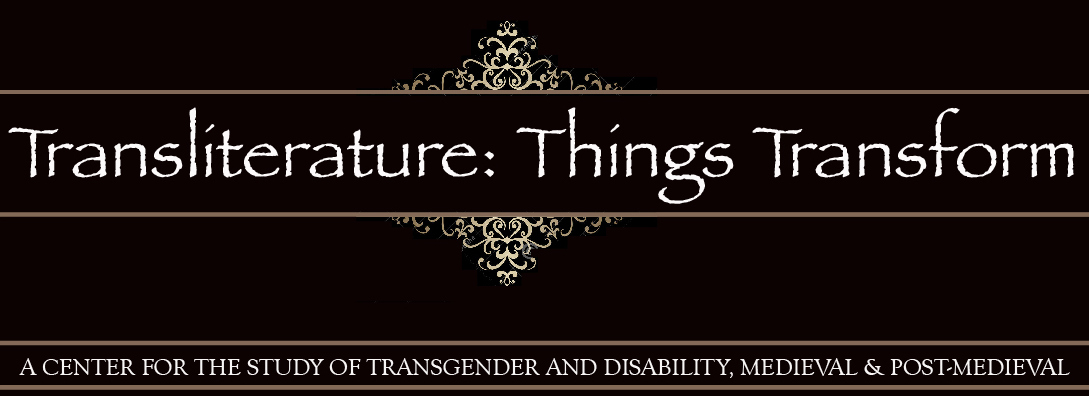"A trans soul lives in the skin
and goes deeper with each touch of the knife. "
and goes deeper with each touch of the knife. "
______________________________
______________________________
Transliterature was recently featured in a special collection on Queer Manuscripts edited by Roberta Magnani and Diane Watt, published by postmedieval: a journal of medieval cultural studies with the article, "Trans Textuality: Dysphoria in the Depths of Medieval Skin." Thank you to everyone who encouraged this piece along and who attended its reading at the New Chaucer Society session in London.
Abstract:
"This article proposes a theoretical method of approaching manuscripts, such as the Ellesmere manuscript of Geoffrey Chaucer’s The Canterbury Tales, through transgender theory, called trans textuality. Beyond looking for transgender identities in medieval texts, such a method asks, ‘what is a trans way of reading?’ and ‘how might non-human objects function in trans ways?’ The study is informed by foundational texts in trans psychoanalysis concerning the processes that trans skin undergoes during transition, texts which are put in conversation with medieval manuscript studies and new materialisms. The resulting response focuses on the threefold work of trans textual skins: depth, duration, and dysphoria. Whether the object is the organ of a transgender body or a medieval manuscript, such trans texts are skin constructs which relate through materiality and metaphor the ongoing narrative of bodies in transition. The article concludes with a twofold study of Fragment VI of the Ellesmere manuscript where the images and writing of the Physician and Pardoner demonstrate the principles of trans textuality: the depth of meanings from other times and genders, the duration of a body through transitions in form, and a dysphoric soul striving in the deeps of medieval skin."
Read the full article online at postmedieval online.
______________________________
______________________________



